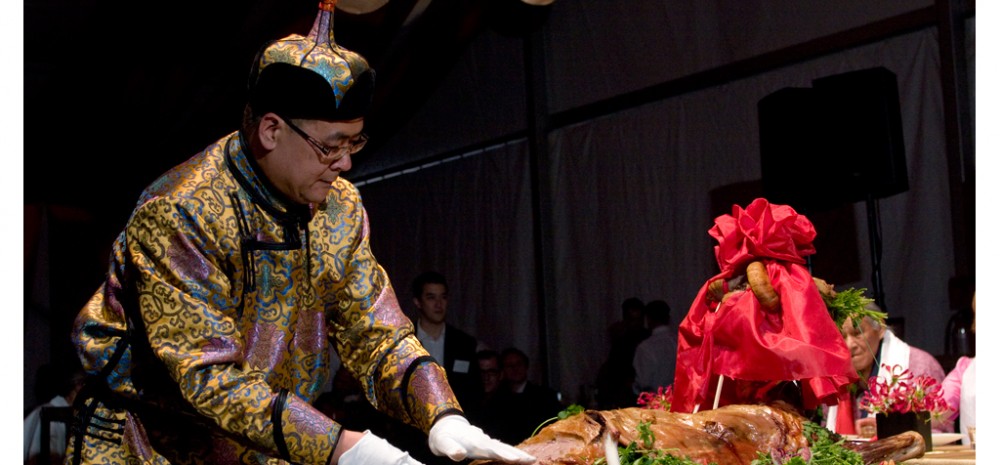Born in 1969 in Inner Mongolia, China
Lives and works in Beijing
DOWNLOAD Mongolian Recipes by Chef Chao Ke Tu [PDF]
Shi Qing
Mongolian Messenger, 2008
For Mongolian Messenger I invited a Mongolian chef from northern China to Santa Fe to disseminate the food culture of Mongolia to Native American people of America. The Mongolian chef comes from the steppe lands of Northern Asia, a place of constant migration and ethnic interaction. Yet, the ancient culture of Mongolia has always been on the peripheries of the predominant East Asian Chinese culture, a similar situation to the Native American peoples of America in relation to their cultural and historical context. It is also said that Mongolian and Native American peoples have ancient blood ties, possibly going back to when Mongolians traversed the frozen Bering Straits in search of fresh pastures thousands of years ago. However, it is not clear whether there is any archeological evidence to support this theory.
My food project is like a kind of experiment in communication, and there is no way of knowing exactly what kind of outcome it will have. However, in order to have more chance of success, the Mongolian chef will only use foodstuffs bought locally, making it possible for the dishes to be cooked locally and to pass from person to person. I will also ask the chef to take an active interest in the food local to Santa Fe and take his favorite foods back to Mongolia. After all, what is it we gain from communication in a globalized world? Is it a gradual erosion of differences, or pluralist coexistence? Perhaps the result of this experiment will provide some clue to answering this question. Another line of inquiry in this project is related to how colonial history has exerted an aggressive influence on local culture, and this contrasts directly to my attempt at simulating a natural and evolutionary approach to cultural interaction. Whether it is cooking for people in the Taos Plaza or having a Mongolian dish become a permanent part of the local cuisine through working with restaurants in Santa Fe, I hope that this project will have some kind of answer to these questions. What I hope to achieve from my work is not just for me, the chef, or the Native American people that we will be communicating with, but it’s more about attempting to establish an artistic method based directly from reality.
Shi Qing and his chef from Mongolia, Chao Ketu, are collaborating with Fernando Olea, chef and owner of Bert’s La Taqueria. They have organized a menu of Mongolian and Mexican dishes, which will be served at Bert’s throughout the run of the exhibition. Shi Qing and Chao Ketu have also cooked meals with a family from Taos Pueblo. Shi Qing and Chao Ketu will choose a traditional, local Native or New Mexican dish to bring back to Mongolia as part of their cultural exchange.
An active experimental artist since 1999, Shi Qing developed his approach to art-making by combining elements of installation, photography, video, and performance art in order to examine the ritual and ceremonial aspects of human nature. Frequently drawing on techniques employed in theater, Qing endeavors to create works that present connections between mythology and group thought.
Since 2005, he has turned his attention toward social and historical issues, using complex allegories to describe how systems of power affect daily life and thought. In NONO: New Ruse of the Empty City, an exhibition organized by Qing, the artist wrote an operetta about how city traffic is controlled during a major political conference. Qing employed professional actors from the Peking Opera to perform the work, and the resulting installation presents looped video along with stage props. Ultimately, the opera itself functions as an allegory within an allegory, using traffic control to represent social and political dynamics, and using the Peking Opera to represent centuries of allegorical story-telling.
A self-trained artist, Qing was a founding member of two important artist collectives in Beijing, Post Sense Sensibility (1999-2002), and the Complete Art Experience Project (2005-6). His position as an artist rests between the self and the collective, and the strength of his work lies in his constant pursuit of a complex artistic language that seeks to articulate our collective consciousness.
Colin Chinnery
